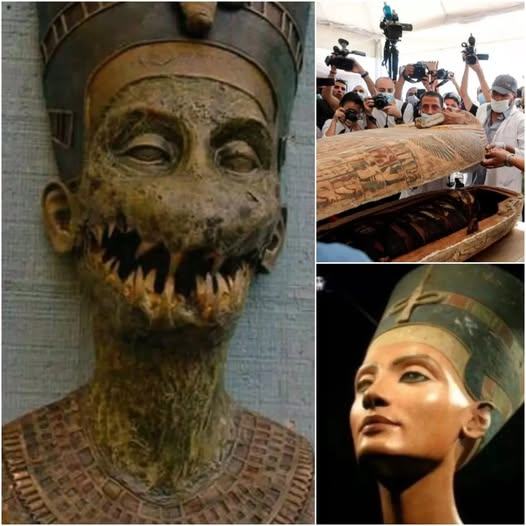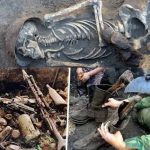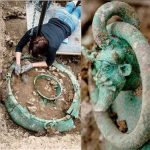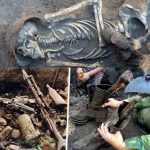Unearthing Eternity: 13 Sealed Coffins Found in Saqqara

Deep beneath the sands of Saqqara, Egypt’s ancient necropolis continues to reveal secrets that challenge our understanding of ancient civilization. Archaeologists have recently discovered 13 perfectly intact wooden coffins, sealed for more than 2,500 years. Hidden within a 40-foot-deep shaft near the iconic Step Pyramid of Djoser, these coffins provide an extraordinary glimpse into the funerary practices, artistry, and spiritual beliefs of one of history’s most fascinating civilizations.
A Timeless Discovery

The coffins remain astonishingly vibrant despite millennia underground, adorned with intricate hieroglyphs, colorful depictions of gods, and sacred symbols. Each sarcophagus reflects the ancient Egyptians’ devotion to the afterlife, encapsulating their belief in eternity and the preservation of the soul. The discovery of these coffins reinforces Saqqara’s status as a treasure trove of historical, cultural, and religious significance, offering researchers unprecedented access to materials that may illuminate rituals, social hierarchies, and the lives of those interred.
The coffins’ craftsmanship is remarkable. Detailed inscriptions depict prayers, protective spells, and depictions of deities meant to guide the deceased into the afterlife. The vivid colors, preserved despite exposure to centuries of burial, highlight the Egyptians’ advanced techniques in pigment preparation and coffin construction. These artifacts stand not merely as burial containers but as symbolic vessels linking life, death, and immortality.
What Lies Within
Archaeologists are now preparing to open the coffins, cautious to preserve their delicate contents. While speculation runs rampant, potential discoveries may include funerary masks, amulets, scrolls, or other ritual objects, each offering insight into the spiritual life and practices of ancient Egyptians. Such finds could deepen understanding of mortuary customs, the socio-economic status of the individuals, and the broader context of Saqqara as a necropolis for the elite.

The 40-foot shaft itself is a testament to the organizational and architectural sophistication of ancient Egypt. Constructing such a vertical burial space demonstrates ingenuity, labor coordination, and precise planning. The positioning of the coffins within the shaft, along with accompanying artifacts, may reveal symbolic or ritualistic considerations, shedding light on the cosmology of ancient Egyptian religion.
Bridging the Past and Present
This discovery highlights the enduring fascination with Saqqara, one of the world’s oldest and most significant burial sites. Beyond archaeological significance, the find offers the public a tangible connection to a civilization that continues to inspire awe for its art, science, and spiritual sophistication. As the coffins are studied, documented, and eventually displayed, they will provide researchers and the global audience with a vivid narrative of life, death, and belief in ancient Egypt.
Conclusion
The uncovering of 13 sealed coffins in Saqqara is a monumental archaeological achievement, offering a rare window into Egypt’s funerary traditions and the timeless human quest for immortality. Each sarcophagus, adorned with vibrant hieroglyphs and sacred symbolism, preserves the legacy of those long departed, linking the past to the present. As researchers carefully examine their contents, Saqqara continues to speak across millennia, revealing stories of devotion, craftsmanship, and the eternal journey of the human soul.











